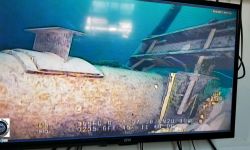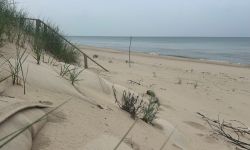Birds in Great Lakes, elsewhere in peril: ‘We need to pay attention’
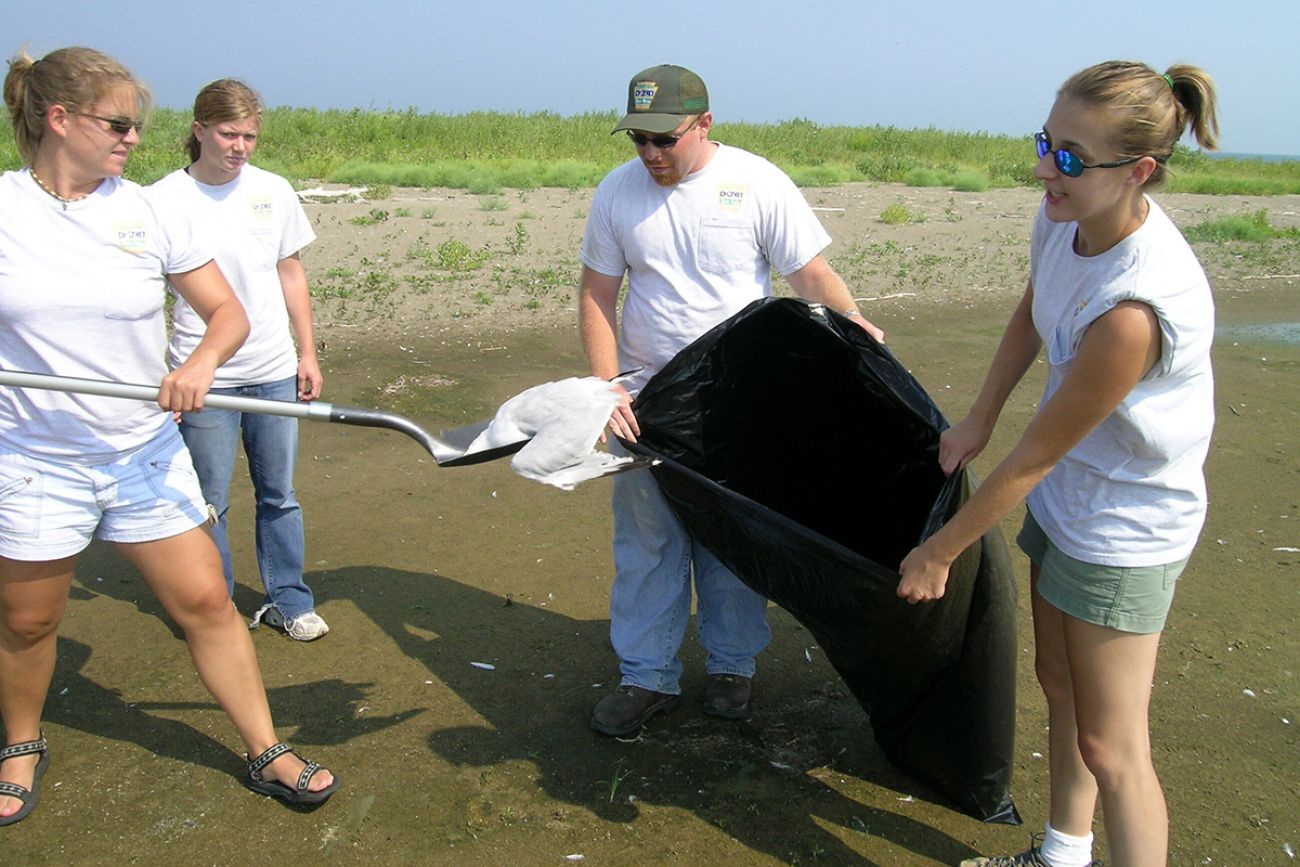
Amanda Rodewald is taking us down a path in Sapsucker Woods. It’s a chilly, windy early spring day in Ithaca, New York. In fact, there are a few snowflakes falling along the wooded path. Rodewald is the Senior Director of the Center for Avian Population Studies at the Cornell Lab of Ornithology.
“The trends are worrisome. When we look across North America since 1970, we've lost an estimated, almost one third of the breeding populations of birds.”
That’s an estimated 3 billion fewer birds.
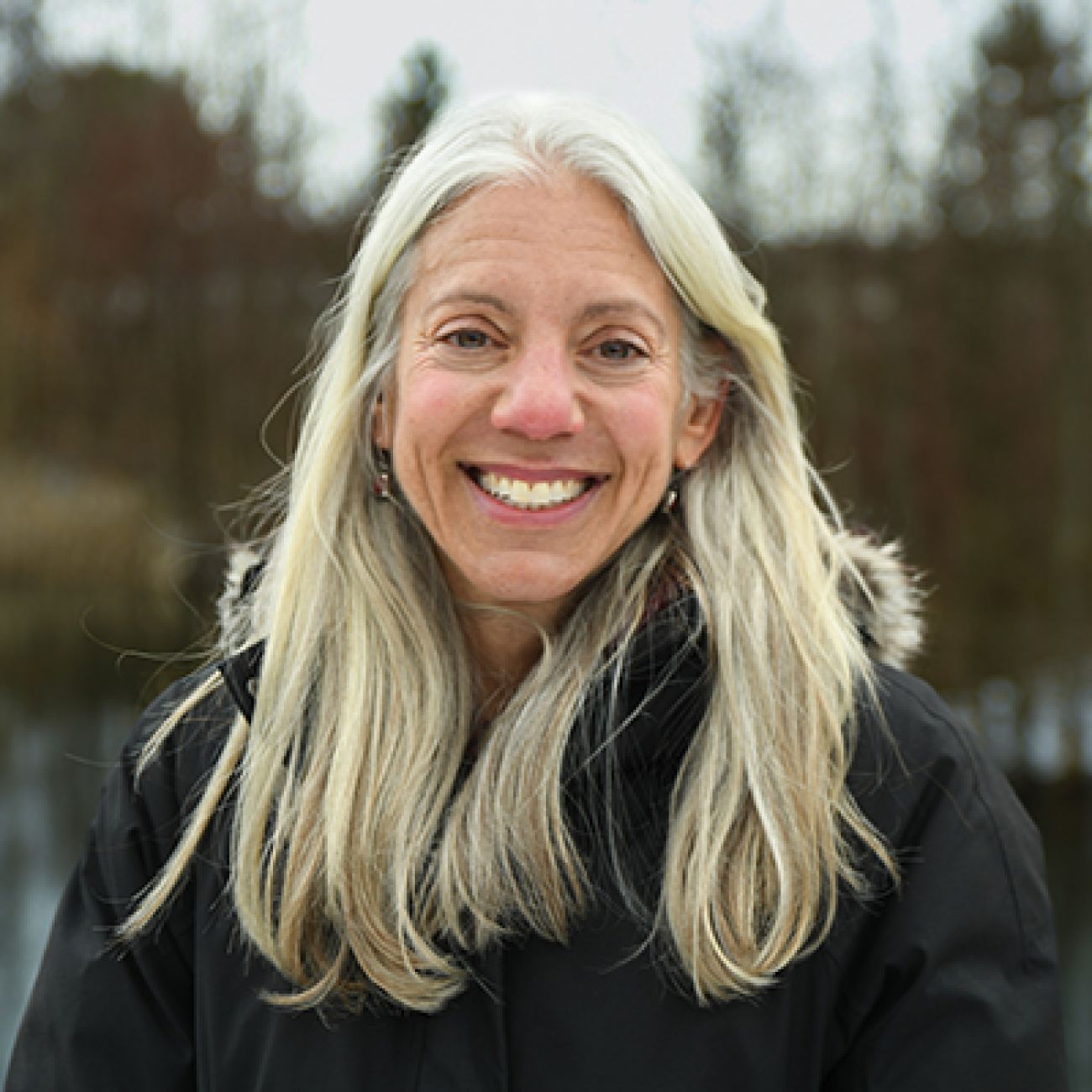
She is the Senior Director of the Center for Avian Population Studies at the Cornell Lab of Ornithology.
“To put it in perspective, at least for me, I was born in 1970. So that's just in my lifetime. Almost one out of three individual birds lost,” Rodewald said.
Related:
- In warming Great Lakes region, water, heat can be an unhealthy combination
- Return of bald eagles to the Great Lakes could hold lessons for humans
- Lawsuit accuses EPA of failing to prevent harmful algal blooms in Lake Erie
The Cornell Lab of Ornithology is well known to researchers and birders: those folks who just love birds.
The lab coordinates several citizen science programs. It offers a popular app called Merlin that identifies bird songs. The Lab curates a huge online collection of photos to help people identify birds.
This article is part of The Great Lakes News Collaborative, which includes Bridge Michigan, Circle of Blue, Great Lakes Now at Detroit Public Television, and Michigan Radio. It unites newsroom resources to report on the most pressing threats to the Great Lakes and drinking water supplies, including pollution, climate change, and aging infrastructure. The independent journalism is supported by the Charles Stewart Mott Foundation.
But many of the birds that people enjoy are in serious trouble.
That’s not just birds that were barely hanging on to begin with. Many of those in trouble are considered pretty common. You might still see them regularly, but their populations are dropping. Other birds are thriving. The reasons for the differences vary, but the challenges revolve around disease, pollution, and habitat loss.
This is the first report of three that will look at those challenges. These online reports come from an audio documentary titled: “The Bird Connection: Change and decline in our world,” produced by Michigan Public.
We'll look at birds you see around the Great Lakes region, such as ducks, geese, shorebirds, and wading birds such as herons and egrets. We’ll also look at fish-eating raptors such as eagles and ospreys.
The challenges those birds face are mostly human-caused.
You might be thinking, yeah, birds are okay, but if there are fewer birds, it really doesn’t affect my life all that much. But it does.
Amanda Rodewald said if you think it doesn’t, you’re not seeing the big picture.
“We need to pay attention. Something's happening. And if we think that it's just birds that are being affected by the environmental changes, well, that's naive, right? Because we live in those places too," she said.
In the early 1900s, when workers used to take cages of chirping canaries into the coal mines with them, it was because the birds were more sensitive to dangerous gasses. If the bird stopped chirping or died, the miners knew to get out right away.
Today, bird populations are declining at alarming rates. That should be a warning to all of us.
The U.S. Fish and Wildlife Service reports on the top threats to birds. The top five included flying into electrical lines, being poisoned, hit by cars and trucks, colliding into building windows, and the number one threat: cats.
Those threats are the “sudden death” sort of scenarios. There are other more passive threats to birds. We’re talking about toxic chemicals in the Great Lakes, the same water where our kids swim. We’re talking about diseases which are hitting bird populations in ways they haven’t before and those diseases are now appearing in mammals, and in a couple of instances people have been infected.
We’re talking about habitat loss for waterbirds, especially wetlands. Vegetated wetlands also give some fish a place to spawn. Wetlands filter runoff from the land. Wetlands help reduce flooding.
What’s good for the birds is good for us.
Something changed with bird flu
In the Great Lakes region, we see die-offs of shorebirds, gulls, and diving ducks by the dozens, sometimes by the hundreds. Sometimes more.
Two years ago in the summer, wildlife ecologists were shocked by the discovery of a massive die off of Caspian terns.

“To see birds that are strewn across the island, bodies stacked on each other in a long line. And then to see dying birds with those dead birds. It was traumatic. It was the worst thing that I've ever experienced,” said Sumner Matteson, an avian ecologist with the Wisconsin Department of Natural Resources.
He and other biologists found dead birds on an island off of Wisconsin’s Door Peninsula. It was the first of about 1,500 dead adult Caspian terns found there and on other Lake Michigan islands in Wisconsin and Michigan. Likely, more than that died elsewhere in the middle of the lake, or dead bird carcasses were carried off by scavengers.
The terns were the victims of a virus which causes avian influenza, or bird flu.
“Caspian terns are magnificent birds,” said Lisa Williams with the U.S. Fish and Wildlife Service.
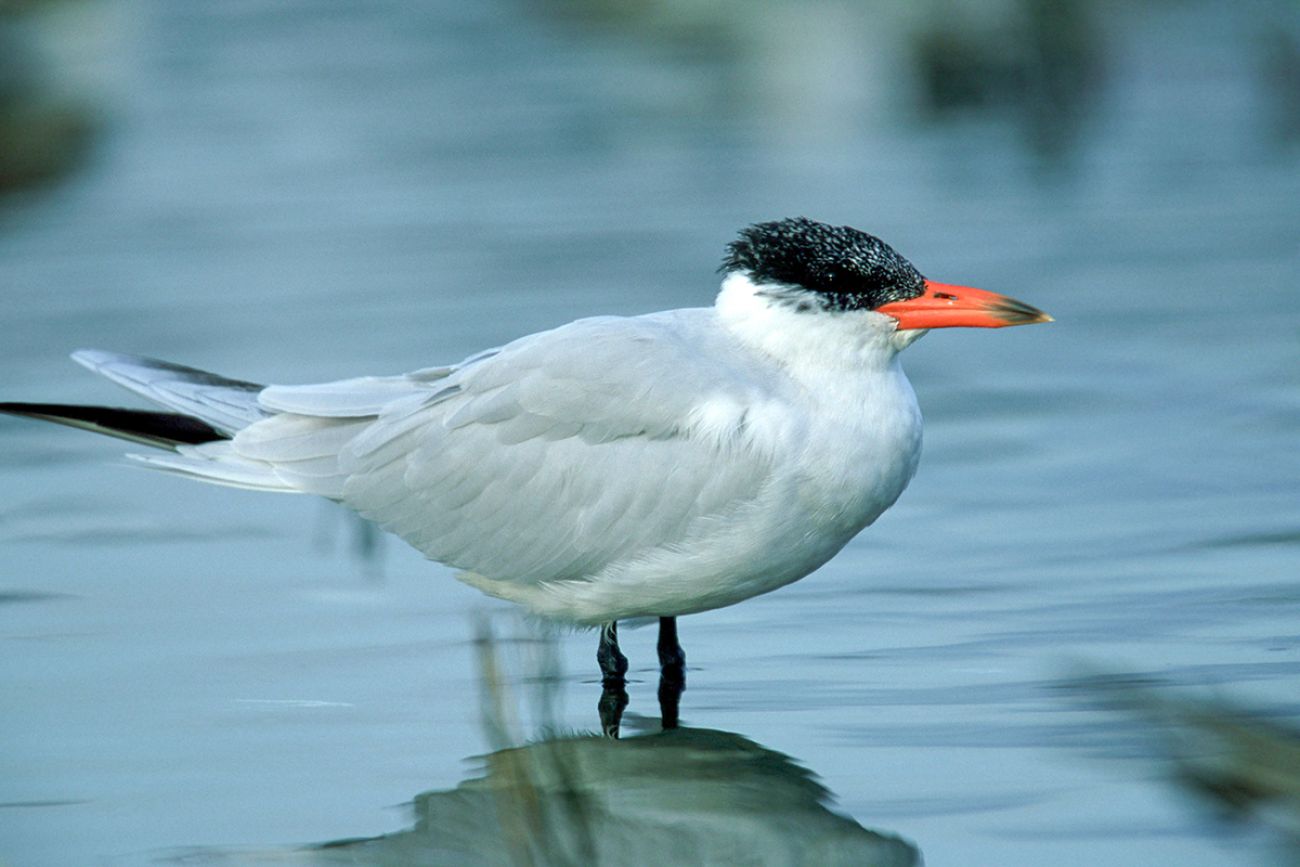
“They’ve got that striking black cap and they fly along, looking down at the water while they fly and suddenly plunge into the water to catch fish.”
Williams said Caspian terns are the largest terns in the world. They migrate each year to the Great Lakes region to nest.
“Caspian terns nest very closely together. And for a disease that’s transmitted through the air, they’re in close enough proximity that that can happen fairly readily on their colonies,” Williams explained.
Bird flu can rip through a colony in no time and that’s exactly what happened on those islands.
Sumner Matteson said an estimated 54 percent of the adult Caspian terns in Wisconsin died that year.
“Absolutely devastating. Catastrophic. It’s going to take years for the Wisconsin population to recover," he said.
He later added that because Caspian terns don’t breed until they’re at least three years old, it’s more likely it would take decades for the population to recover.
In the past, wild birds infected with highly pathogenic avian influenza showed no signs of illness. But that outbreak in 2022 killed more than just terns. It killed songbirds, raptors, and scavengers such as crows.
Also, the outbreak affected nearly 86 million domestic birds such as chickens, according to Michigan State University’s Veterinary Diagnostic Laboratory.
Julie Melotti shares facilities at that lab. She’s a wildlife pathologist with the Michigan Department of Natural Resources.
“In 2022 was the first year that we saw direct mortality caused by that virus in wild birds. We saw it in waterfowl, but we saw it in a lot of bald eagles because bald eagles are scavengers and they’re going to scavenge on these sick waterfowl or these dead waterfowl and pick up avian influenza.”

Melotti said it’s unclear why the virus suddenly started to affect the wild bird population. It could be that the virus that causes bird flu has mutated.
“Whether these became more pathogenic to wild birds, whereas before they were just carriers of the virus because of those mutations, I’m not sure," she said.
"And I don’t know if it’s completely known yet. The other interesting thing that we found with that outbreak is that we had wild mammals that also became infected, and that was a first.”
This strain of bird flu has also spread to farm animals. This spring, health officials determined that a human became sick after working with infected dairy cattle and last week, another human in Michigan was infected in the same way.
With this animal to human transmission, this version of avian flu not only concerns wildlife biologists, but it has veterinarians and public health officials keeping a close eye on the situation too.
One expert noted that people are exhausted after dealing with the COVID pandemic, but some healthcare authorities think this new version of Highly Pathogenic Avian Influenza has the potential to be worse than COVID-19 if the mutations lead to human-to-human infections.
The trade-off of free trade
Large die-offs of birds are not limited to bird flu.
There’s one problem that’s been around since the 1960s and so far there’s not a solution to stop it.
A couple of decades ago, we went to Presque Isle State Park in Erie, Pennsylvania. It was one of several spots along Lake Erie, Lake Ontario, and Lake Huron where dead birds and fish were washing up on the beach.
That summer one of the jobs Leslie Jones and her fellow interns had was to pick up dead birds killed by botulism Type E.

“When we’re out here doing migratory bird studies, we might see some and then we pick them up as soon as possible. A lot of times, we get radioed from different people like lifeguards and they have us come out and pick them up so that the disease doesn’t spread throughout the rest of the ecosystem.”
In some previous years at Presque Isle, hundreds of birds and untold numbers of fish would die in a summer.
The interns found five dead birds rotting on the beach. They buried the maggots around the bird carcasses because they also could carry the botulism toxin. Other birds might eat them and become infected. They shoveled the bird carcasses into a big black plastic garbage bag, the kind that contractors use when removing asbestos.
“If they’re very fresh — this one obviously is not very fresh, but if we get a fresh one, we actually freeze them and they’re sent off to be tested for botulism. But something like this we’ll just bag up until we can get them incinerated to get rid of all the disease.”
A local funeral home handled the incineration.
The frozen carcasses were shipped to the National Wildlife Health Center in Madison, Wisconsin. There, Grace McLaughlin was among the researchers who began to put the puzzle together.
A couple of invasive species were brought in the ballast water of cargo ships coming from eastern Europe. Zebra mussels and quagga mussels created huge mussel beds on lake bottoms. That began a complicated biological phenomenon. Organic matter, mostly dead algae, settled to the bottom among the mussels and decayed there. That, combined with the mussels' pseudofeces would lower the oxygen level in the immediate area of the mussels. McLaughlin said Type E botulism spores occur naturally, but they began spreading like crazy in this new anaerobic environment.
“That toxin will accumulate in the organic matter as well as in the water in the immediate vicinity of the mussel beds,” McLaughlin explained.
“As the mussels do their filter feeding, they will accumulate the toxin. However, they are not susceptible to the toxin. When the fish start coming down there and eating the mussels, they become intoxicated, lose their ability to swim properly, and become easy prey for the birds that come in.”
And another invader from Eastern Europe, the round goby, was the primary fish feeding on the mussel beds. Researchers made the connection when they noted botulism poisoning started spreading among birds shortly after round gobies arrived in big numbers.
Later, research out of the University of Wisconsin gathered data from volunteers who walked the beaches in Door County, Wisconsin, Sleeping Bear Dunes National Lakeshore in Michigan and in the Upper Peninsula of Michigan. They found botulism deaths also coincided with warmer waters. So, add climate change as a factor.
Researchers also learned that because the mussels filtered microscopic organisms out of the water, it was clearer. Sunlight could reach deeper in the water for more algal growth which would eventually die. Again, that robbed the bottom of oxygen as it decayed, which meant even more botulism spores.
In our reporting archives we found there were larger bird and fish die-offs due to botulism E in 2006, 2007 and others in 2013 and 2016. Nearly every year there are die-offs, but some years are worse than others.
For example, in 2016, about 600 birds died along the shore of Lake Michigan, washing up at Sleeping Bear Dunes National Lakeshore and then there were more dead birds in the Upper Peninsula of Michigan that year.
The really difficult part is predicting exactly when to expect a particularly bad year. Last year in late October when the temperatures were cooler, about 300 birds died at Sleeping Bear Dunes due to botulism. Other years, very few birds die.
Over the decades, though, the death toll has been significant, with numbers in the tens of thousands.
“While we haven’t had large numbers or large mortalities in the more recent years, there have been some years that we’ve had huge mortalities. And so, in 2006, 2007, these estimates were about 7,000-7,500 birds affected. And in 2006, those were primarily common loons. So, you’re talking about thousands of loons,” said Melotti with the Michigan DNR.

To make matters worse, a second kind of botulism, botulism type C, is also killing birds. These aren’t the diving birds like loons, cormorants, or merganser ducks. Botulism C affects what are called dabbling ducks, like mallards. They forage at the water’s surface and along the shore’s edge where they might pick up maggots that fed from infected carcasses or picked up botulism from some of the soil or sediment at the shore’s edge.
Birds infected by botulism toxins die a horrible death. They’re paralyzed. Some become so weak their neck doesn’t have the strength to hold up their head. It falls into the water and the bird drowns. The researchers call it limber neck or twisted neck. Other birds simply cannot move; they can’t swim to shore. They float out on the water until they starve to death.
This huge increase in deaths of birds and fish primarily is because of those invasive species brought to the Great Lakes by cargo ships. Free trade has made the world better for us, but it comes at a steep price for birds.
And studies from Yale and Notre Dame, among others, indicate invasive species' damage to the Great Lakes economy, basically negates any economic advantage of allowing ocean-going cargo ships into the Great Lakes.
Julie Melotti said there’s not a lot that can be done to control the botulism toxin from forming, but there is something that can help prevent it from spreading.
“We can have people combing the beaches and removing carcasses so that we reduce that mortality. I mean, it’s very hard to do, but that’s the little piece that we can do is get those carcasses out of there so that you don’t have species like eagles, or — it’s mostly gulls that are affected by that — consuming those carcasses.”
Are we missing something?
At Michigan State University’s Corey Marsh Ecological Research Center, you can hear frogs and birds everywhere. There’s a restoration going on here. This was once a wetland area that was drained to be farmland. Now some of the farm is being changed back into wetlands. Frogs, muskrats, and ducks seem to like the change.
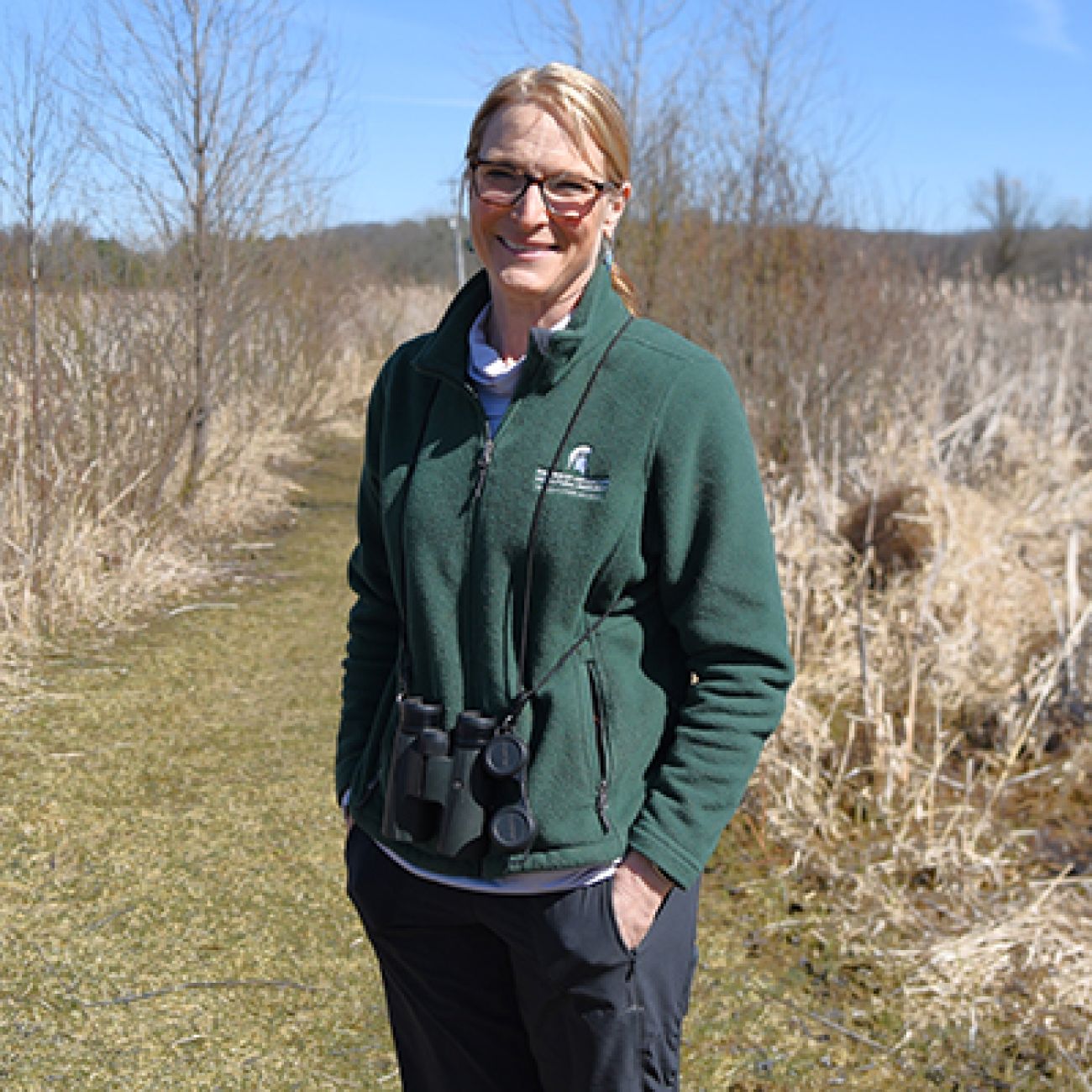
Jen Owen is the Center’s director. She also researches diseases in wild bird populations. She says there is another disease in the Great Lakes region that can look like botulism, including that limber neck or twisted neck.
“Newcastle disease virus. So, we call botulism limber neck because it causes this twisted neck. Well, double-crested cormorants, which are the main host reservoir for Newcastle disease virus, also get that- what looks like twisted neck. And they have these neurological signs that they fall over," she said. "If you've tested a bird and said, oh, it has botulism, and then you see all these other dead fish-eating birds, you just say that's all botulism.”
That means Newcastle disease might be underreported.
Researchers have discovered Newcastle disease outbreaks every couple of years in the double-crested cormorant colonies. So sometimes without more testing, it's hard to be certain what might be contributing to large die-offs of Great Lakes waterbirds. The assumption that it’s botulism and not Newcastle could lead to an outbreak of the disease at poultry farms. Owen said it is a virulent, contagious, and fatal viral disease that especially affects chickens.
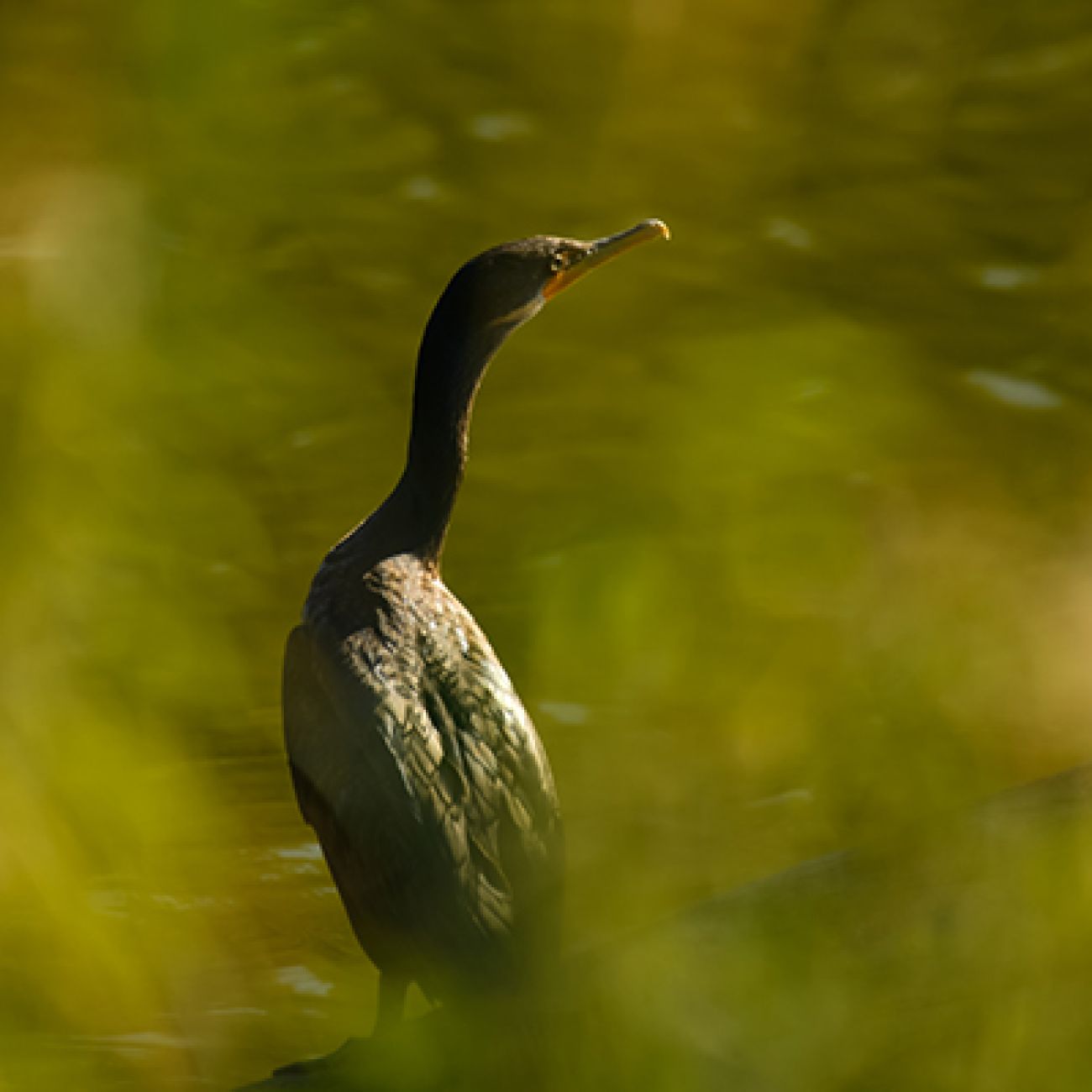
The U.S. Department of Agriculture’s Animal and Plant Health Inspection Service calls Newcastle disease “…one of the most infectious diseases of poultry in the world.” Sometimes outbreaks of the disease are traced back to imported birds.
Free trade makes life better for all of us in the form of cheaper goods and access to export markets. The downside is the spread of invasive species and diseases that can have devastating effects on Great Lakes fisheries and birds.
The Bird Connection was written and produced by the Environment Report’s Lester Graham and Rebecca Williams. Vincent Duffy was the editor. The program was made possible by a grant from the Charles Stewart Mott Foundation. This was a production of Michigan Public in partnership with the Great Lakes News Collaborative.
Michigan Environment Watch
Michigan Environment Watch examines how public policy, industry, and other factors interact with the state’s trove of natural resources.
- See full coverage
- Subscribe
- Share tips and questions with Bridge environment reporter Kelly House
Michigan Environment Watch is made possible by generous financial support from:
Our generous Environment Watch underwriters encourage Bridge Michigan readers to also support civic journalism by becoming Bridge members. Please consider joining today.
See what new members are saying about why they donated to Bridge Michigan:
- “In order for this information to be accurate and unbiased it must be underwritten by its readers, not by special interests.” - Larry S.
- “Not many other media sources report on the topics Bridge does.” - Susan B.
- “Your journalism is outstanding and rare these days.” - Mark S.
If you want to ensure the future of nonpartisan, nonprofit Michigan journalism, please become a member today. You, too, will be asked why you donated and maybe we'll feature your quote next time!


